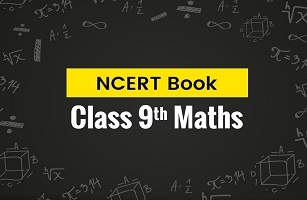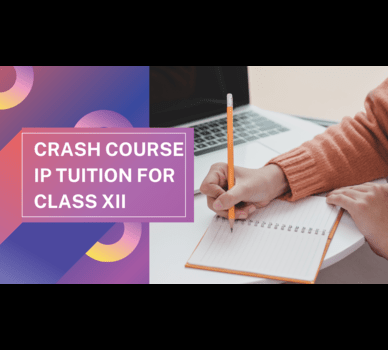 UrbanTution
UrbanTution
Overview
Course Description
The curriculum at Secondary stage primarily aims at enhancing the capacity of students to employ Mathematics in solving day-to-day life problems and studying the subject as a separate discipline. It is expected that students should acquire the ability to solve problems using algebraic methods and apply the knowledge of simple trigonometry to solve problems of height and distances. Carrying out experiments with numbers and forms of geometry, framing hypothesis and verifying these with further observations form an inherent part of Mathematics learning at this stage. The proposed curriculum includes the study of number system, algebra, geometry, trigonometry, mensuration, statistics, graphs and coordinate geometry, etc.
Maths tutor for class 9 will help in completing the whole syllabus in record time.Let's start the fun journey of learning maths with the best maths tutor online.
UNIT I: NUMBER SYSTEMS
1. REAL NUMBERS
1. Review of representation of natural numbers, integers, rational numbers on the number line. Representation of terminating / non-terminating recurring decimals onthe number line through successive magnification. Rational numbers as recurring/ terminating decimals. Operations on real numbers. 2. Examples of non-recurring/non-terminating decimals. Existence of non-rational numbers (irrational numbers) such as , and their representation on the number line. Explaining that every real number is represented by a unique point on the number line and conversely, viz. every point on the number line represents a unique real number. 3. Definition of nth root of a real number. 4. Rationalization (with precise meaning) of real numbers of the type and (and their combinations) where x and y are natural number and a and b are integers. 5. Recall of laws of exponents with integral powers. Rational exponents with positive real bases (to be done by particular cases, allowing learner to arrive at the general laws.)
UNIT II: ALGEBRA
1. POLYNOMIALS Definition of a polynomial in one variable, with examples and counter examples. Coefficients of a polynomial, terms of a polynomial and zero polynomial. Degree of a polynomial. Constant, linear, quadratic and cubic polynomials. Monomials, binomials, trinomials. Factors and multiples. Zeros of a polynomial. Motivate and State the Remainder Theorem with examples. Statement and proof of the Factor Theorem. Factorization of ax2 + bx + c, a ≠ 0 where a, b and c are real numbers, and of cubic polynomials using the Factor Theorem. Recall of algebraic expressions and identities. Verification of identities: + and their use in factorization of polynomials. 3 2. LINEAR EQUATIONS IN TWO VARIABLES (14) Recall of linear equations in one variable. Introduction to the equation in two variables. Focus on linear equations of the type ax+by+c=0. Explain that a linear equation in two variables has infinitely many solutions and justify their being written as ordered pairs of real numbers, plotting them and showing that they lie on a line. Graph of linear equations in two variables. Examples, problems from real life, including problems on Ratio and Proportion and with algebraic and graphical solutions being done simultaneously.
UNIT III: COORDINATE GEOMETRY COORDINATE GEOMETRY
(6) The Cartesian plane, coordinates of a point, names and terms associated with the coordinate plane, notations, plotting points in the plane.
UNIT IV: GEOMETRY
1. INTRODUCTION TO EUCLID'S GEOMETRY (Not for assessment)
History - Geometry in India and Euclid's geometry. Euclid's method of formalizing observed phenomenon into rigorous Mathematics with definitions, common/obvious notions, axioms/postulates and theorems. The five postulates of Euclid. Equivalent versions of the fifth postulate. Showing the relationship between axiom and theorem, for example: (Axiom) 1. Given two distinct points, there exists one and only one line through them. (Theorem) 2. (Prove) Two distinct lines cannot have more than one point in common.
2. LINES AND ANGLES
1. (Motivate) If a ray stands on a line, then the sum of the two adjacent angles so formed is 180O and the converse. 2. (Prove) If two lines intersect, vertically opposite angles are equal. 3. (Motivate) Results on corresponding angles, alternate angles, interior angles when a transversal intersects two parallel lines. 4. (Motivate) Lines which are parallel to a given line are parallel. 5. (Prove) The sum of the angles of a triangle is 180O . 6. (Motivate) If a side of a triangle is produced, the exterior angle so formed is equal to the sum of the two interior opposite angles.
3. TRIANGLES
1. (Motivate) Two triangles are congruent if any two sides and the included angle of one triangle is equal to any two sides and the included angle of the other triangle (SAS Congruence). 2. (Prove) Two triangles are congruent if any two angles and the included side of one triangle is equal to any two angles and the included side of the other triangle (ASA Congruence). 4 3. (Motivate) Two triangles are congruent if the three sides of one triangle are equal to three sides of the other triangle (SSS Congruence). 4. (Motivate) Two right triangles are congruent if the hypotenuse and a side of one triangle are equal (respectively) to the hypotenuse and a side of the other triangle. (RHS Congruence) 5. (Prove) The angles opposite to equal sides of a triangle are equal. 6. (Motivate) The sides opposite to equal angles of a triangle are equal. 7. (Motivate) Triangle inequalities and relation between ÃÂangle and facing side inequalities in triangles.
4. QUADRILATERALS
1. (Prove) The diagonal divides a parallelogram into two congruent triangles. 2. (Motivate) In a parallelogram opposite sides are equal, and conversely. 3. (Motivate) In a parallelogram opposite angles are equal, and conversely. 4. (Motivate) A quadrilateral is a parallelogram if a pair of its opposite sides is parallel and equal. 5. (Motivate) In a parallelogram, the diagonals bisect each other and conversely. 6. (Motivate) In a triangle, the line segment joining the mid points of any two sides is parallel to the third side and in half of it and (motivate) its converse.
5. AREA Review concept of area, recall area of a rectangle.
1. (Prove) Parallelograms on the same base and between the same parallels have equal area. 2. (Motivate) Triangles on the same base (or equal bases) and between the same parallels are equal in area.
6. CIRCLES
Through examples, arrive at definition of circle and related concepts-radius, circumference, diameter, chord, arc, secant, sector, segment, subtended angle. 1. (Prove) Equal chords of a circle subtend equal angles at the center and (motivate) its converse. 2. (Motivate) The perpendicular from the center of a circle to a chord bisects the chord and conversely, the line drawn through the center of a circle to bisect a chord is perpendicular to the chord. 3. (Motivate) There is one and only one circle passing through three given non-collinear points. 4. (Motivate) Equal chords of a circle (or of congruent circles) are equidistant from the center (or their respective centers) and conversely. 5. (Prove) The angle subtended by an arc at the center is double the angle subtended by it at any point on the remaining part of the circle. 6. (Motivate) Angles in the same segment of a circle are equal. 7. (Motivate) If a line segment joining two points subtends equal angle at two other points lying on the same side of the line containing the segment, the four points lie on a circle. 8. (Motivate) The sum of either of the pair of the opposite angles of a cyclic quadrilateral is 180ð and its converse. 5 7. CONSTRUCTIONS (10) 1. Construction of bisectors of line segments and angles of measure 60o, 90o, 45o etc., equilateral triangles. 2. Construction of a triangle given its base, sum/difference of the other two sides and one base angle. 3. Construction of a triangle of given perimeter and base angles.
UNIT V: MENSURATION
1. AREAS
Area of a triangle using Heron's formula (without proof) and its application in finding the area of a quadrilateral. 2. SURFACE AREAS AND VOLUMES (12) Surface areas and volumes of cubes, cuboids, spheres (including hemispheres) and right circular cylinders/cones.
UNIT VI: STATISTICS & PROBABILITY
1. STATISTICS Introduction to Statistics: Collection of data, presentation of data ÃÂ tabular form, ungrouped / grouped, bar graphs, histograms (with varying base lengths), frequency polygons. Mean, median and mode of ungrouped data. 2. PROBABILITY (9) History, Repeated experiments and observed frequency approach to probability. Focus is on empirical probability. (A large amount of time to be devoted to groupand to individual activities to motivate the concept; the experiments to be drawn from real - life situations, and from examples used in the chapter on statistics).




